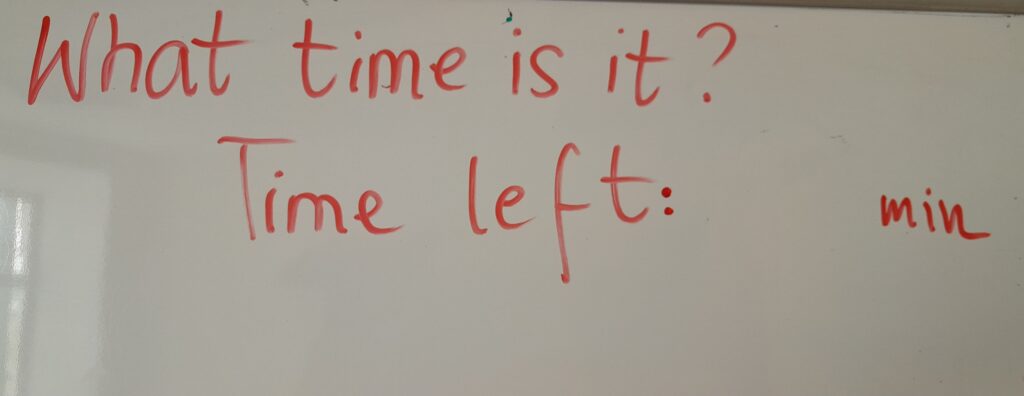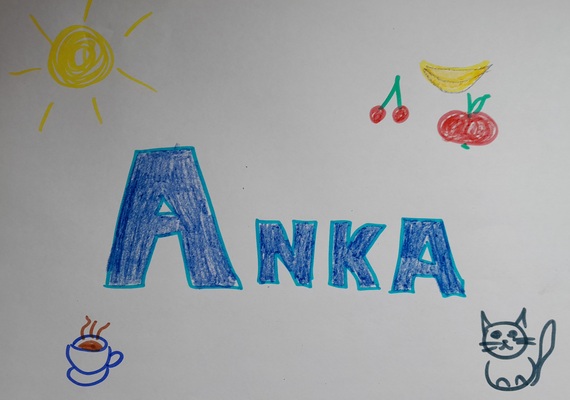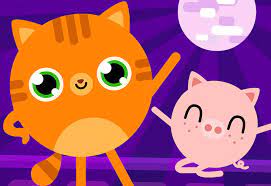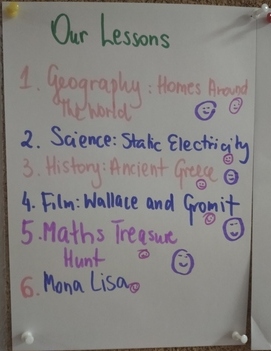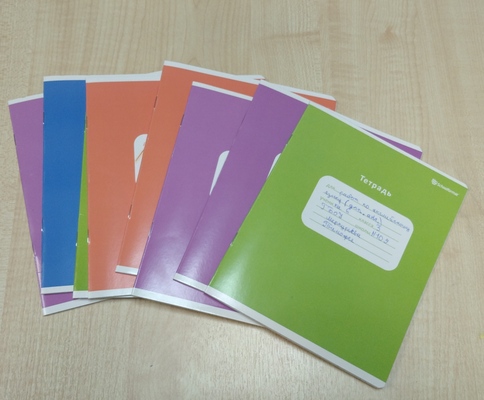
It is funny how, sometimes, a particular topic lands on your table all of a sudden. I’d say ‘L1 made a cameo appearance’ but it would not be very accurate. It was defininitely not a cameo appearance. I am thinking more of a scene from Harry Potter, the one in which the Dursley’s living room gets flooded with the envelopes from Hogwarts after uncle Vernon tries to hide the one letter to Harry for a few days…
This was the use of L1 in the EFL classroom, especially when you are teaching kids. There were some conversations with my trainees, during the input sessions and during the private consultations, there were a few sessions at the Warm-Up Conference from Masha Elkina. Then I found the book by Shellagh Deller and Mario Rinvolucri with whom I had a pleasure to learn years ago so I automatically reach out for their books whenever I see them on any shelf. Last but not least, there was my own teaching this summer.
One conclusion: I think I know what the next post is going to be about…
As regards, the book, I need to read it first and to find a few activities that I would love to experiment with in my lessons. Luckily, the new academic year is about to start so there will be at least two groups that will help me with it. The post will come out of it, too.
In the bibliography you will also find a few of the most recent articles available online (yay to the easy access) but I have to admit – I haven’t read them yet, the bibliography today will be my ‘saved for later’ type of a list. I will be dealing with them later but maybe you will get there first.
I have written about the use of L1 on this blog:
- The overheard conversations about the different angles of looking at the use of L1, from the kids, the admin, the parents and the teachers
- What do our gurus say
- And one devoted to some reasearch relevant to us Bits of research
- My personal experience, published in 2020.
- And about two situations with my pre-school group when I managed to solve the problem without using any L1, one related to behaviour (Are you a girl or are you a lion?) and one related to language clarification (The Spiderman story).

This summer’s teaching and why it made me think about L1
This summer, apart from my regular students, I am also working at a summer camp in the city, mostly with primary students and with a few younger ones, who usually come with their older brothers and sisters. We have a programme designed specifically for the summer classes, without any coursebook and with the adjustable level of the literacy content, focusing on developing vocabulary and structures and the speaking skills, with a lot of CLIL and task-based learning activities that can be adapted to the needs of a mixed ability group. If you are curious about the actvities, I have been keeping my summer camp diary here.
The biggest issue that I have had to deal with during this summer camp was not the mix of levels and age groups but the very essence of a summer camp, its short duration or, perhaps, not only the duration on its own and the fact that we teach students for only two weeks, usually, but the fact that during this kind of a camp, some students may join the group on only some days and even only for a part of the day. I would like to stress that we all had fun and we learnt a lot but, all these factors really did get in the way of the effective establishing of the class routines and introducing and implementing the class rules.
This has become especially important because my group was made of amazing individuals, aged 6 – 9, however, these were the individuals who had absolutely no idea how to be a group and how to try to be a part of a group. This is precisely what made me think about the advantages of using my students L1.

A few case studies, to get us started…
Imagine, dear reader, that these are the things that happen while mid-air aka while in class, teaching, engaging, motivating.
Case study #1: Two brothers, Sasha and Sasha, play in pairs and they start debating the rules of the game which quickly turns into a fight. It all looks serious, especially that these are two brothers taking part and, unwillingly, they bring into this conversation everything else that has gone on between them since that very morning or week. One of the brothers wants to play the game according to the rules that we have used so far (good, he has learnt), the other one wants to play according to the new rules that we have just introduced this morning and which his brother has missed. I actually want to laugh out loud because they take it so seriously, our games rules, but it is very serious for them and it is getting even more serious by the minute. There are six other kids in the lesson.
Case study #2: One of the girls, Sasha, suddenly comes across an obstacle in the lesson, for example, one of the other students tries to help her with an answer. Or she cannot find a pencil that she wants. Or she is not the first one that the teacher asks a question. Regardless of how minor this obstacle might actually be in reality, she automatically withdraws, tears up, loses control and, if there is any paper, around, for example a drawing, she crumbles it and throws it into the bin. If she had been an oyster, she’d snap shut. Sasha attends classes only three days a week, on Wednesday, Thursday and Friday, and this kind of a reaction usually happens on her day 1, every single week. Later on, during the week, she calms down, feels a bit more comfortable until the following day 1 when the anxiety levels go up again, as if she had forgotten that she is in a safe environment.
Case study #3: We are playing a competitive game, in three teams. One of the students, Sasha, struggles with accepting the idea of a competitive game. He is over the moon when his team is winning, when they get many points, when they find a nice surprise but, at the same time, every time he is not, he starts shouting out all what he thinks about the game, ‘It’s not fair!’, ‘I never win’, ‘They only win’, ‘I always get the stupid boxes’….A very interesting case of an extremely short-term memory loss because, literally, a second ago, this student was celebrating his achievements in the game.
Case study #4: We are doing a creative task. Sasha has a great idea, she presents it and it really is great and a lot of fun. We all laugh. The following student, Sasha, also decides to include it in his contributions. Sasha girl reacts immediately with: ‘Oh, no, you are copying from me!!!’ Both Sasha are not happy.
Case study #5: Sasha is not happy with the behaviour of the group and she decides to assume to role of the teacher, or, perhaps, to help the teacher in the way she feels is appropriate and she makes a very decisive and authoritative comment, a very adult comment if you think about. She says: ‘You are very loud. Stop it. I am beginning to get a headache’. The group, naturally, does not approve and it is all obvious and written all over their faces – they are on the verge of deciding not to like Sasha at all. The funny thing is that this is just the group’s reaction to this particular song and it is within the boundaries and rules established in the summer camp group. Sasha, however, doesn’t know it because she joins the group only for an hour, in the middle of the day and, of course, she brings with her the rules that she learnt in her regular English classes at school. She is also a bit older than the group so perhaps that is why she feels she is obliged to take on the role of the ‘expert’ and to show the way.
(Here you can find a whole huge post that I am really proud of, about the competitive and non-competitive games in the YL classroom.)

The teacher sighs and makes a decision
All of the case studies described above come from the last few weeks of teaching, all of the Sashas are real people and I will have to go over the text again in a moment in order to make sure that the kids’ real names have not been typed up by mistake. Real students, real situations, real problems…
In all of these, there have been only one question that I had to ask myself, namely: What am I dealing with here and how can I sort it out in the most effective of ways? And, since you have been reading this post for a few minutes now, you can probably guess the answer already.
Having taken everything into consideration, the kids as a group, the kids as individuals, the details of the particular situation, I decided to deal with all of these in the students’ L1. Here is why:
- All of these situations involved some kind of distress for my students and not dealing with them at all would be impossible as they were all very likely to snowball and to have more implications for the individual students and for the atmosphere in the group. Some action was necessary.
- Because of the age and the level of the students, relying on the kids’ mother tongue gave me an opportunity to ensure that the kids will really hear me and, with using L1, I could have a real conversation. Asking questions, eliciting, asking the kids to reflect with pre-A and A1 students is only possible in their L1. Taking the kids’ real development into account and thinking of all of these situations as an opportunity to develop as a human, to develop the kids social skills and to help them notice the other children in the group, there is no doubt that L1 had to be used. As an educator, I had no doubt about that.
- As a teacher of English, I did feel a tiny (tiny) bit guilty about not trying to do it in our target language but, having had enough time and plenty of those situations as I have been teaching at the camp over the entire summer this year, I know I made a good decision. The context is different in our permanent, regular classes. First of all, we develop the language in a more organised way and it is easier to smuggle the appropriate langauge to talk about emotions or rules there. Second of all, there is more time and the framework is more regular and structured. You start the year slowly, adding elements, games, interaction patterns as you go along and when the kids are ready for them. If the group returns after the summer, even if there are new students joining in, the skeleton of the rules, routines, rewards and patterns is already there, in place, and it really needs only some dusting, perhaps. Summer camp is an academic year in a nutshell, or pehaps, even better, it is like a time-lapse video of the academic year – all the stages and processes are the same only at a much faster pace. Of course, there are consequences of that.
- As for the solutions and the situations described above in my five case studies, they were dealt with in a variety of ways. Sometimes, it meant putting the lesson on hold and having a short conversation with the whole group. Sometimes, it was limited to only comforting the student, offering help and giving her a moment to calm down. Sometimes it meant a quick chat with the two main participants, in private, without drawing the attention of all the other students. Sometimes, it meant a bi-lingual input, like in the case study #4: explaining that the student copied the approach and the idea only because it is a great idea in L1 and then, reinforcing it, or rather, claiming the key phrase (‘Wow, it is a very good idea!’), hoping that we will be able to add it to our set of the functional language in the classroom. Apart from that, I was working a lot on buidling the community, in the context that we were in, for example working in teams, working in pairs, working as one big team, letting the kids make decisions about the lesson and letting them lead the games. I would like to hope that all of these helped the kids develop their social skills, too.

Coda
There are no real take-outs here. This is only a description of an experience from this summer that has made me reflect on the ways of using and keeping the kids’ L1 in the classroom. And, certainly, it is not the last post in that category…

Bibliography
Sheelagh Deller and Mario Rinvolucri (2002), Using the Mother Tongue. Making the most of the learner’s langauge, Delta Publishing
When is it ok to use students’ L1 in the classroom? (2023) Cambridge Blog: World of Better Learning
The use of L1 in English Language Teaching (2019), Cambridge University Press
Using L1 in the classroom, TEFL Online
Using the Mother Tongue in English Language Classroom (2022), OnTesol
Survival Guide Using L1 in the classroom by Lindsay Clanfield and Duncan Foord, One-stop English
Why, When and How to Use L1 in the Classroom (2022), Barefoot Teacher

Happy teaching!

